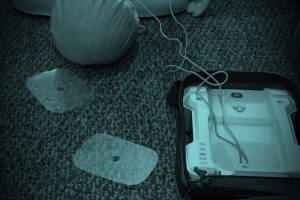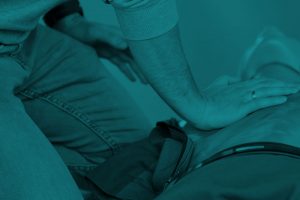
Abstract
Intervention by members of the public during an out of hospital cardiac arrest (OHAC) including resuscitation attempts and accessible automated external defibrillator (AED) has been shown to improve survival. This study aimed to investigate the OHCA and AED knowledge and confidence, and barriers to intervention, of the public of North East England, UK. This study used a face-to-face cross-sectional survey on a public high street in Newcastle, UK. Participants were asked unprompted to explain what they would do when faced with an OHCA collapse. Chi-Square analysis was used to test the association of the independent variables sex and first aid trained on the participants’ responses. Of the 421 participants recruited in the study, 82.9% (n = 349) reported that they would know what to do during an OHCA collapse. The most frequent OHCA action mentioned was call 999 (64.1%, n = 270/421) and 58.2% (n = 245/421) of participants reported that they would commence CPR. However, only 14.3% (n = 60/421) of participants spontaneously mentioned that they would locate an AED, while only 4.5% (n = 19/421) recounted that they would apply the AED. Just over half of participants (50.8%, n = 214/421) were first aid trained, with statistically more females (57.3%, n = 126/220) than males (43.9%, n = 87/198) being first aiders (p = 0.01 χ2 = 7.41). Most participants (80.3%, n = 338/421) knew what an AED was, and 34.7% (n = 326/421) reported that they knew how to use one, however, only 11.9% (n = 50/421) mentioned that they would actually shock a patient. Being first aid trained increased the likelihood of freely recounting actions for OHCA and AED intervention. The most common barrier to helping during an OHCA was lack of knowledge (29.9%, n = 126/421).
Although most participants reported they would know what to do during an OHCA and had knowledge of an AED, low numbers of participants spontaneously mentioned specific OHCA and AED actions.
Improving public knowledge would help improve the public’s confidence of intervening during an OHCA and may improve OHCA survival.
Full article;






